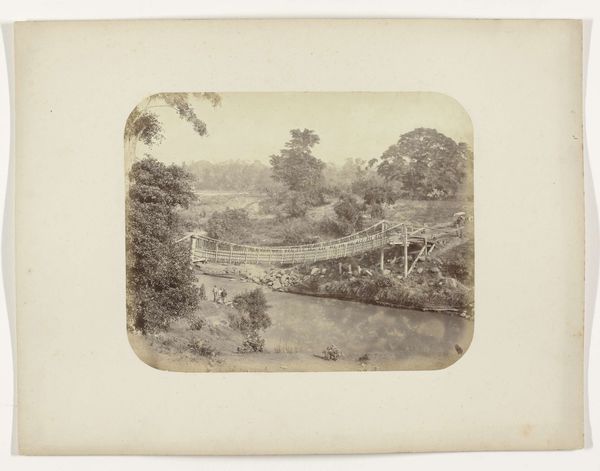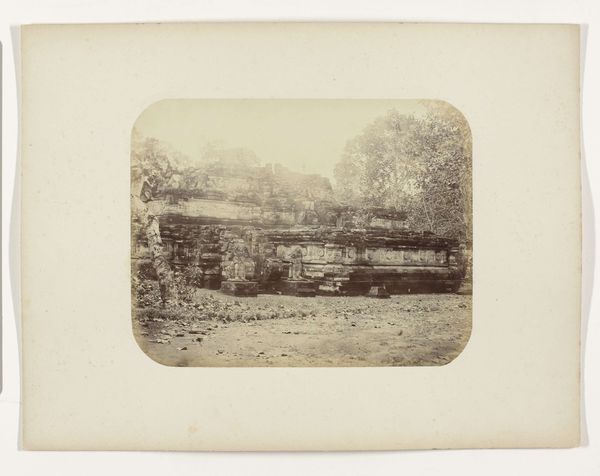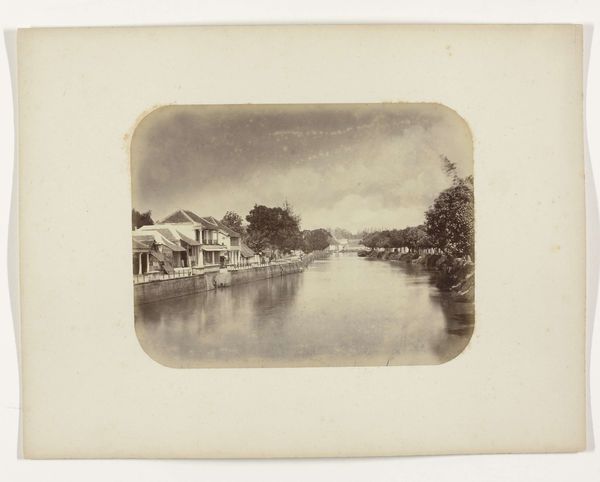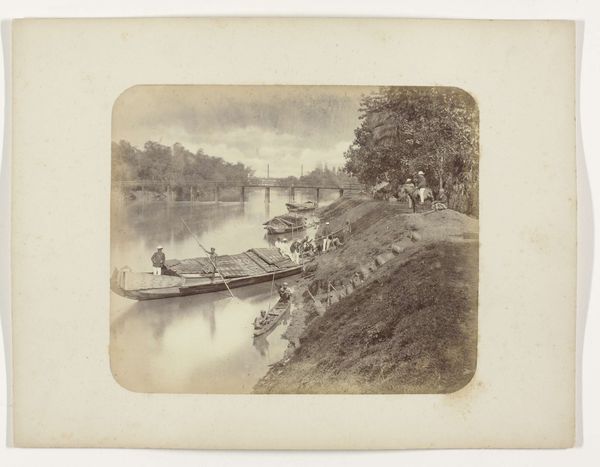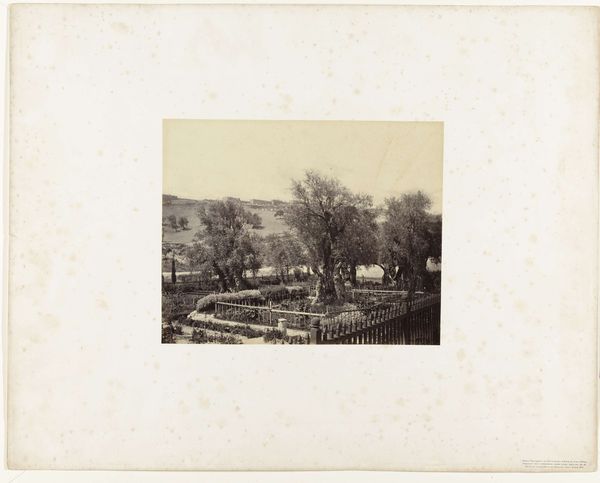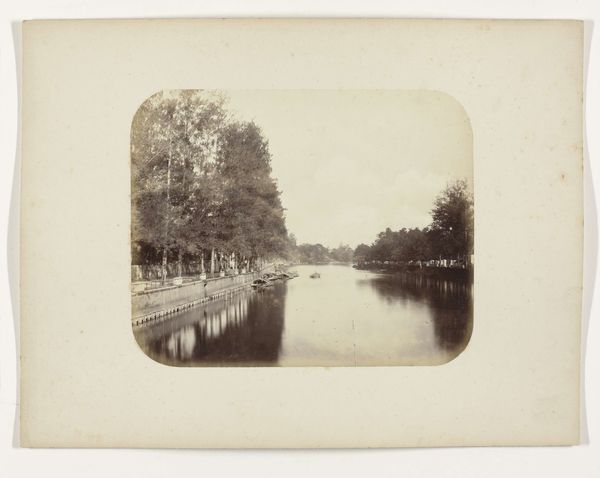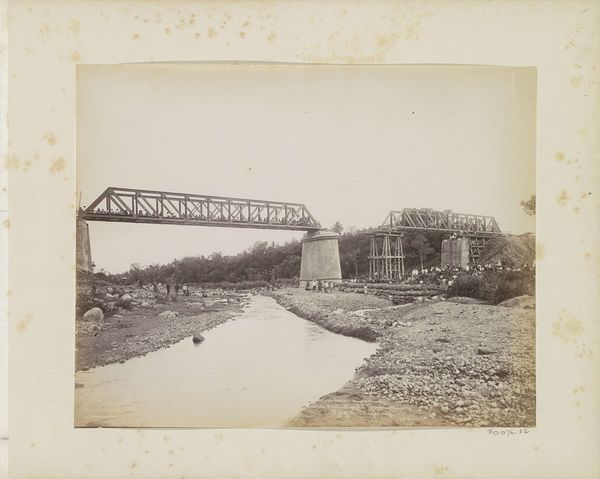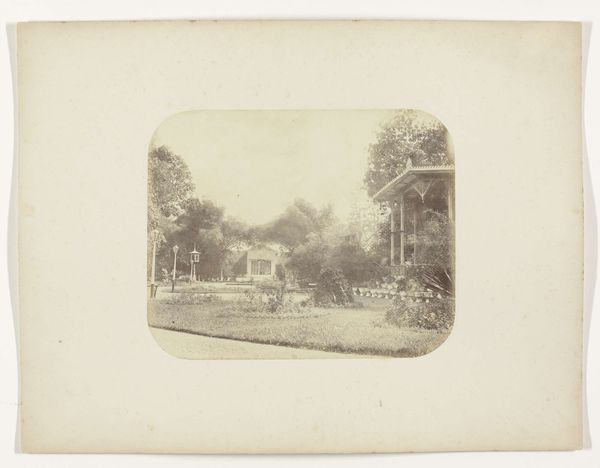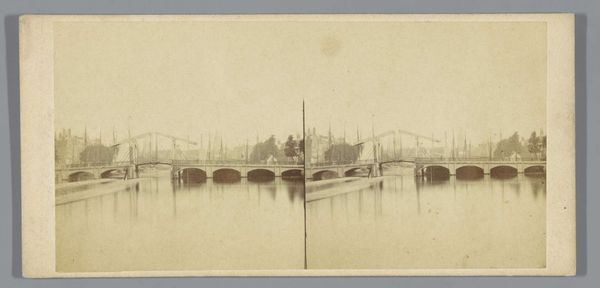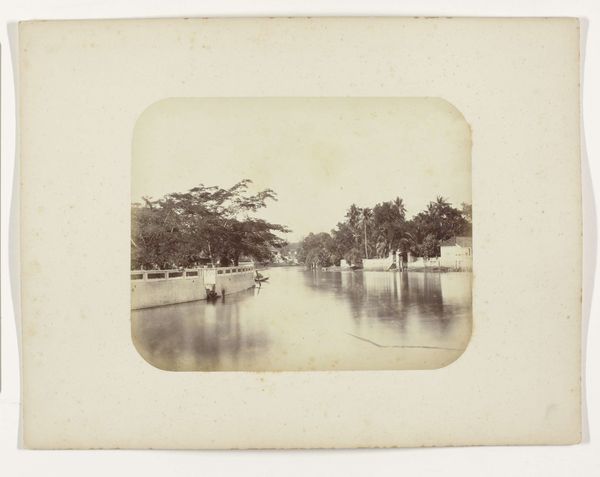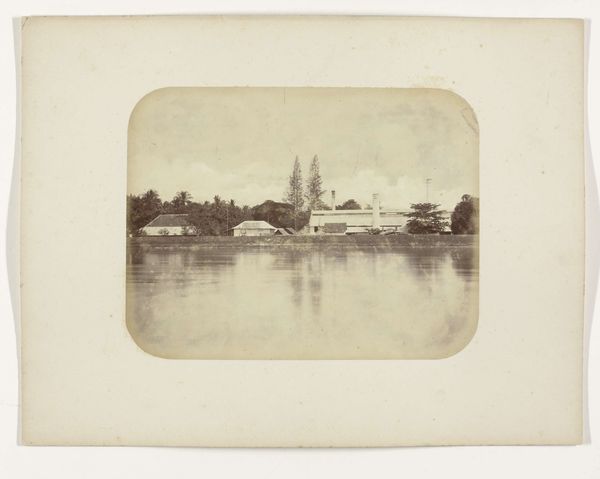
photography, albumen-print
#
landscape
#
photography
#
coloured pencil
#
orientalism
#
albumen-print
#
realism
Dimensions: height 22.3 cm, width 27.8 cm
Copyright: Rijks Museum: Open Domain
Curator: This albumen print, titled "IJzeren brug over de Kali Brantas," made sometime between 1876 and 1884, offers a fascinating glimpse into colonial infrastructure. Herman Salzwedel captured this scene, which now resides here at the Rijksmuseum. Editor: Immediately striking. The sepia tones imbue it with a sense of faded grandeur. Notice how the horizontal expanse of the bridge cuts through the verticality of the surrounding foliage. A potent visual statement. Curator: Precisely! It’s crucial to understand this bridge wasn’t simply a feat of engineering. The very act of its construction speaks to Dutch colonial ambition—control over resources, transportation, and, ultimately, the people. Look at the repetitive geometric supports contrasted with the organic riverbanks; this embodies the tension between industrial advancement and the local environment. Editor: Yes, and those iron supports! The repetition creates a compelling rhythm, drawing the eye across the water, which almost perfectly mirrors the structure. It is fascinating how the artist organized tone, line and the bridge construction within a strict order which reveals how such visual devices can influence our understanding and emotional response. Curator: It highlights the labor invested. Metal had to be extracted, forged, transported – an intricate network of material processes linked to both local workforces and distant colonial powers. And this image becomes an artifact testifying to that relationship. Consider what this bridge enabled in terms of resource extraction and trade at the expense of indigenous populations. Editor: Without question! This single span and use of iron is in total contrast with its setting of what then would have seemed far flung islands of the Dutch East Indies. Its straightness also draws your eye to its vanishing point. Curator: Seeing this now encourages us to contemplate the lasting impact of such infrastructure projects, and how they transformed both the landscape and social dynamics. Editor: Absolutely! What initially appears as an aesthetic observation opens up much deeper considerations. Curator: Precisely! Its structural order and careful composition really enhance our historical and industrial knowledge here.
Comments
No comments
Be the first to comment and join the conversation on the ultimate creative platform.
